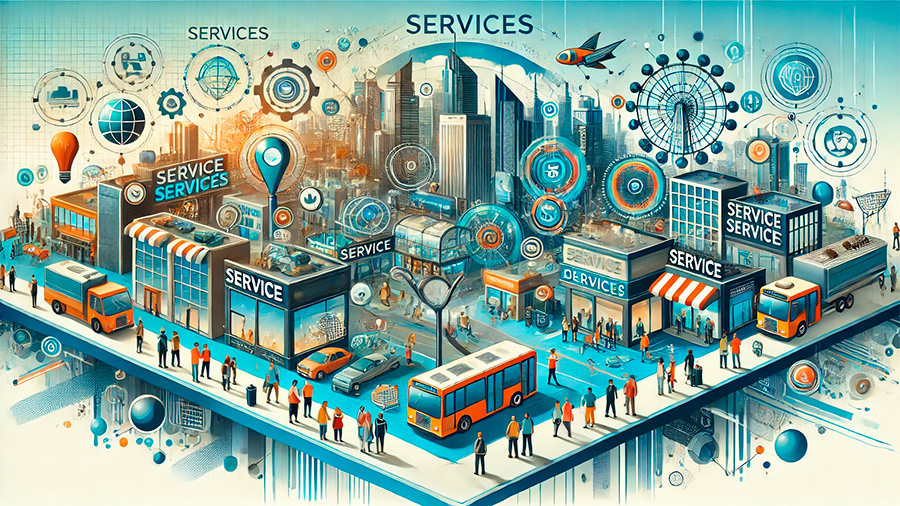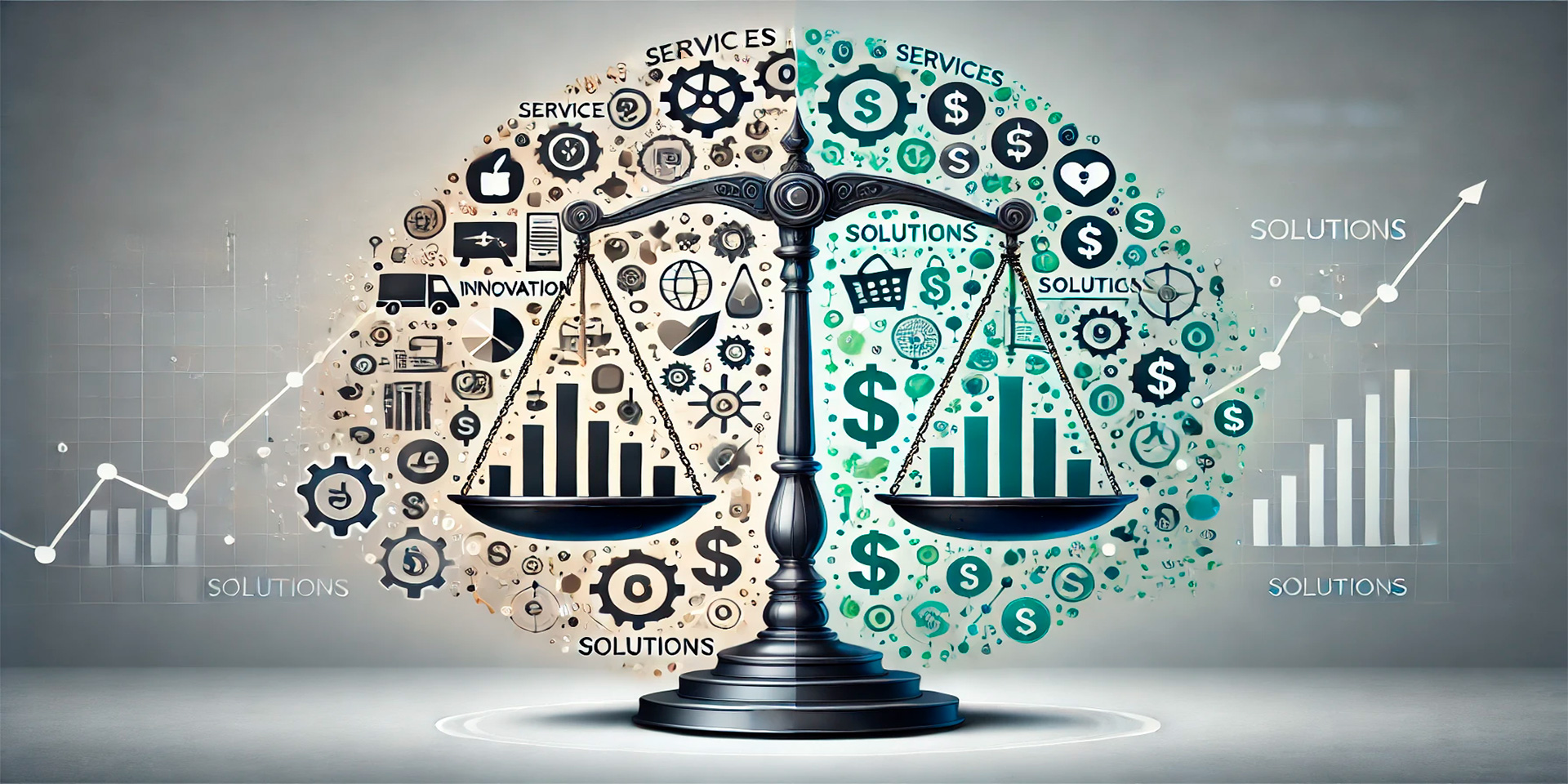In any healthy economy, there must be a balance between the supply of goods and services and the demand from consumers. However, when services grow faster than consumer purchasing power, market imbalances can occur, leading to inefficiencies, financial strain, and even economic stagnation. This article explores the consequences of services outpacing consumer demand, the underlying causes of this imbalance, and how to address these challenges to ensure a sustainable economic environment.
The Impact of Services Growing Faster Than Consumer Demand
The rapid growth of services, driven by technological advancements, globalization, and increased competition, can create an imbalance when the demand for these services does not match the available purchasing power of consumers. This discrepancy can manifest in various ways, from rising unemployment rates to economic inequality.
1. Economic Stagnation and Reduced Growth
When services outpace demand, the economy may experience stagnation. While businesses continue to produce and offer services, the lack of sufficient demand limits the overall growth potential of industries. As companies struggle to find consumers for their offerings, they may face financial difficulties, resulting in layoffs and lower wages.
Consequences of economic stagnation:
- Increased unemployment: With fewer customers, companies may be forced to downsize, leading to higher unemployment rates as businesses struggle to maintain profitability.
- Slower wage growth: As demand weakens, businesses may reduce wage increases or freeze pay to manage financial strain, further reducing consumer purchasing power.
- Lower investment in innovation: A lack of consumer demand can lead to a decrease in business investment in research and development, hindering long-term innovation and economic dynamism.
2. Increased Financial Strain on Consumers
When the supply of services exceeds demand, prices may rise as companies attempt to maintain profitability. For consumers, this can result in increased costs for services that they cannot afford, leading to greater financial strain. The gap between rising service costs and stagnant wages can exacerbate inequality and push many consumers into debt.
How market imbalances affect consumers:
- Higher service costs: In an oversupplied market, companies may raise prices to maintain profitability, making essential services like healthcare, education, and transportation more expensive for consumers.
- Decreased purchasing power: When wages do not keep up with rising service costs, consumers’ ability to purchase goods and services decreases, leading to lower standards of living.
- Debt accumulation: Consumers may turn to credit to bridge the gap between their income and their increasing cost of living, leading to higher levels of personal debt.
3. Business Failures and Market Saturation
In a market where services grow faster than consumer demand, businesses may struggle to stay afloat. The oversupply of services leads to increased competition, which can drive down prices and margins, making it harder for companies to remain profitable. This saturation can result in business closures and economic contraction in affected sectors.
The effects of market saturation on businesses:
- Reduced profit margins: As competition increases and demand stagnates, businesses may lower prices to attract customers, reducing their profit margins.
- Business closures: Companies that cannot maintain profitability may be forced to close, leading to job losses and a further reduction in demand for services.
- Overcapacity: In certain sectors, overcapacity can lead to unused resources, such as empty office buildings or idle factory equipment, which strains businesses further.

Why Services Outpace Consumer Demand: The Root Causes
Understanding the causes of market imbalances is crucial in addressing the issue effectively. There are several factors that contribute to services growing faster than consumer demand, many of which are related to technological changes, economic policies, and consumer behavior.
1. Technological Advancements and Increased Productivity
Technological innovations often lead to increased efficiency and productivity, allowing businesses to offer more services at lower costs. However, these advancements may outpace the ability of consumers to afford or fully utilize these services. While technology increases the supply of services, the purchasing power of consumers may not increase at the same rate.
How technology accelerates supply:
- Automation: Automation technologies allow businesses to produce more goods and offer more services without significantly increasing labor costs, leading to an oversupply of services.
- Innovation in service delivery: The development of online platforms and digital services has expanded the availability of services to a broader audience but without corresponding increases in consumer spending.
2. Globalization and Increased Competition
Globalization has expanded access to services across borders, increasing the supply of services in local markets. As companies compete on a global scale, they may offer lower prices or more services, which can lead to market oversaturation. While consumers have more access to services, their ability to afford these offerings may not increase at the same pace, leading to an imbalance.
Globalization’s impact on the services market:
- Increased competition: As businesses from around the world enter local markets, competition intensifies, leading to an oversupply of services and reduced profitability.
- Outsourcing and offshoring: Companies often outsource services to countries with lower labor costs, increasing the supply of services globally while reducing costs for businesses.
3. Stagnant Wage Growth and Income Inequality
When wages do not keep up with the rising cost of services, consumers are unable to purchase the full range of services available. Stagnant wage growth, combined with income inequality, means that while the availability of services increases, the ability of many consumers to pay for these services remains limited. This disparity creates a mismatch between supply and demand in the market.
The role of wage stagnation in market imbalances:
- Income inequality: As the wealth gap widens, fewer consumers can afford to purchase services, leading to reduced demand and market inefficiencies.
- Stagnant wages: In many economies, wages have not kept pace with the rising cost of living, preventing consumers from purchasing more services.
Addressing the Imbalance: Solutions for a Sustainable Market
To address the issue of services outpacing consumer demand, a combination of policy reforms, business adaptations, and consumer education is needed. By focusing on strategies that align service supply with real consumer purchasing power, economies can restore balance and foster sustainable growth.
1. Stimulating Consumer Demand through Economic Policies
Governments can stimulate demand by implementing policies that increase purchasing power. This can include raising the minimum wage, offering tax relief to low- and middle-income households, or introducing subsidies for essential services. Stimulating demand through government intervention can help create a more balanced market where services are more in line with consumer purchasing power.
Economic policies to boost demand:
- Increasing wages: Raising the minimum wage and improving labor conditions can boost consumer purchasing power, allowing people to afford more services.
- Tax relief: Providing targeted tax cuts for lower-income groups can increase disposable income, stimulating demand for services.
- Direct consumer subsidies: Offering subsidies for essential services like healthcare, education, and housing can make them more affordable, thus encouraging demand.
2. Encouraging Service Innovation and Differentiation
To overcome market oversaturation, businesses must focus on differentiating their services and creating more value for consumers. Innovation in service delivery and the development of niche markets can help companies attract customers in a saturated environment.
How businesses can innovate:
- Personalized services: Offering tailored services that meet specific consumer needs can help businesses stand out in crowded markets.
- Enhanced customer experience: Focusing on providing exceptional customer service and improving the overall consumer experience can help companies build loyalty and reduce churn.
- Service bundles: Offering service packages that combine multiple services at a discounted rate can help attract customers looking for value.
3. Enhancing Financial Literacy and Consumer Education
Educating consumers on financial management and service consumption can help them make informed decisions about spending. By fostering better financial literacy, consumers can better manage their resources and align their purchasing decisions with their budgets.
Education initiatives for consumers:
- Financial education programs: Offering financial literacy programs can help consumers understand budgeting, saving, and prioritizing services based on their needs.
- Consumer awareness campaigns: Educating consumers on the costs and benefits of various services can help them make smarter purchasing decisions, reducing the risk of overspending.
Conclusion
When services grow faster than consumer demand, it can lead to economic imbalances that hurt both businesses and individuals. By understanding the causes of this imbalance and implementing effective solutions, such as stimulating consumer demand, encouraging service differentiation, and improving financial literacy, economies can create a more sustainable market. Balancing the supply of services with consumer purchasing power is key to fostering long-term economic growth and stability.

